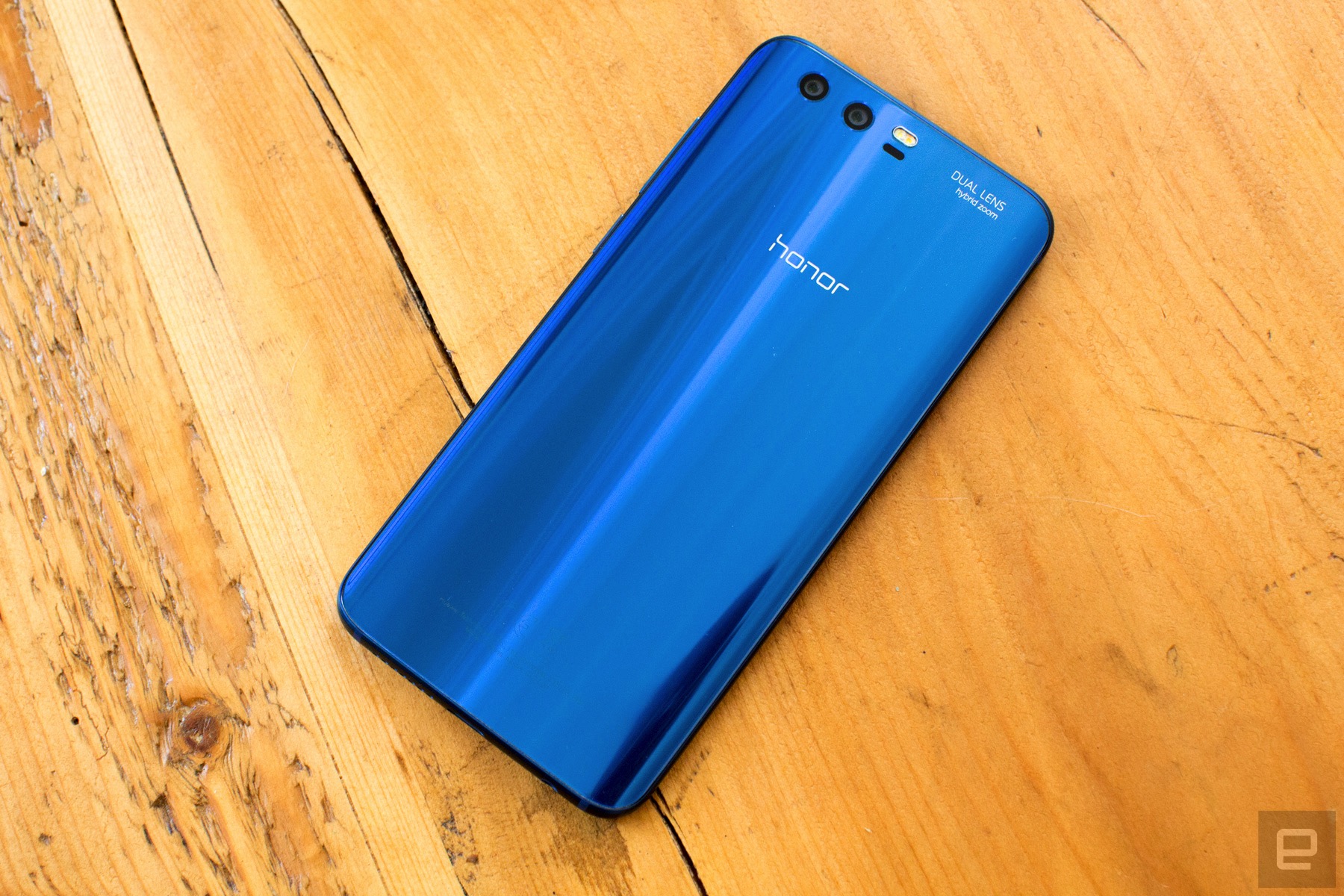Whereas the Honor 8 Pro had a 5.7-inch, Quad HD display, the Honor 9 comes with a 5.15-inch, 1080p panel. It’s plenty sharp, but doesn’t have the resolution to compete with an LG G6 or Samsung Galaxy S8. On a screen this size, however, the pixel count isn’t much of an issue and the trade-off should mean superior battery life, which is always welcome. Inside, the Honor 9 rocks a Kirin 960 processor, with four 2.4GHz cores and four 1.8GHz cores — like the Honor 8 Pro — 4GB of RAM and 64GB of onboard storage, which can be boosted by up to 256GB with a microSD card.
Both phones charge over USB Type-C and have a fingerprint sensor, although the Honor 9 has its scanner round the front, rather than on the rear-side. Positioning the sensor on the front does make the device a little taller than it might otherwise need to be, but given the display size, it’s still perfectly manageable in one hand. That is, provided the phone isn’t squirming around. The metal frame and so-called “3D curved glass back” is startling, especially in the “Sapphire Blue” I’ve been testing recently. The glass makes it slippery, however, so I highly recommend picking up a case.

It is, at first blush, an attractive phone. But like all Honor hardware, it feels uninspired and unoriginal. The design resembles an early prototype — the first draft of something more ambitious — or the rough amalgamation of everything else that’s come out this year. There are no obvious blemishes or branding that will make you embarrassed to take a call in public. But the design doesn’t say anything either. It’s fine, pretty even, but has little in the way of personality or ideas. Whereas Samsung and even Huawei are pushing for original, distinctive designs, Honor seems happy to play it safe.
There’s also the camera. The Honor 9 offers a dual-shooter system on the back, similar to Huawei’s more expensive P10 smartphone. Both have a 12-megapixel RGB sensor paired with a 20-megapixel monochrome equivalent for improved detail and, if you’re the artsy type, superior black and white shots. The P10 uses Leica-endorsed lenses, however, while the Honor 9 has some nondescript glass at the back. It seems to make a difference; the few shots I’ve taken with the Honor 9 have been lacking, with washed out colors and aggressive sharpening. That’s outside, in glorious sunshine too, which doesn’t bode well for low-light shooting. Hopefully this can be improved with a post-launch software update.




